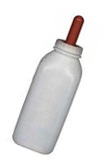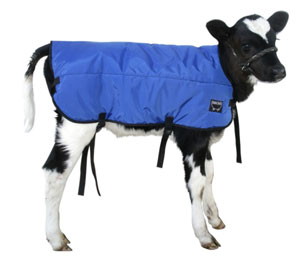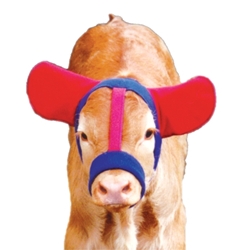Calves are very susceptible to the stresses of cold weather. At birth, calves only have about 3% body fat! Getting and keeping them warm from birth to weaning is critical to their survival. Below are some tips for getting calves through the cold winter months.
1. Feed colostrum: Colostrum should be the first feed a calf receives after birth. That first milk produced by the dam is highly nutrient dense and rich with fat to help support the newborn calf’s first day outside of the womb. Colostrum should be the only feed provided in the first day of life. If inadequate colostrum is produced, utilize a high quality, milk-based colostrum replacer, such as #1924 Ultra Start 150+, instead. Though expensive, colostrum replacer will help ensure the calf receives the necessary nutrients and fat it requires early on.
2. D on’t underfeed: Calves lack an excess of fat to help insulate them from the cold. The energy they need to grow can quickly be used up in efforts to just maintain body temperature during colder months. In order to continue to grow, more energy and nutrients are required. If feeding a milk replacer, consider switching to a higher fat variety or provide an extra feeding during the day to get those calves that extra energy. A fat supplement, such as #1918 K-Cal for Calves or #1916 Milk Energizer, can also be added to milk or milk replacer to increase the energy content to sustain cold-stressed calves.
on’t underfeed: Calves lack an excess of fat to help insulate them from the cold. The energy they need to grow can quickly be used up in efforts to just maintain body temperature during colder months. In order to continue to grow, more energy and nutrients are required. If feeding a milk replacer, consider switching to a higher fat variety or provide an extra feeding during the day to get those calves that extra energy. A fat supplement, such as #1918 K-Cal for Calves or #1916 Milk Energizer, can also be added to milk or milk replacer to increase the energy content to sustain cold-stressed calves.
3. Provide water: Just because it’s cold out does not mean that calves no longer need water. The dry air and extra stress on their bodies mean that water is even more necessary. Be sure to provide them with adequate, fresh, free-choice water. Replace water as it freezes over as calves will not drink the water through ice cubes.
4. Bed well: Keeping calf pens clean and dry is always important, but never more important than in winter. Lying on wet bedding can quickly draw heat from their body making them have to work harder to maintain their body temperature. Make sure to bed well and consider using straw. Providing straw will allow calves to create themselves a nest to keep warm. Change straw regularly to keep it clean.
 5. Utilize calf jackets, etc.: Sometimes we all need jackets, including our young calves. The jackets will help keep body heat in and calves comfortable. When using calf jackets make sure to wash them well between calves to prevent transmission of disease.
5. Utilize calf jackets, etc.: Sometimes we all need jackets, including our young calves. The jackets will help keep body heat in and calves comfortable. When using calf jackets make sure to wash them well between calves to prevent transmission of disease.
 Also available are calf ear muffs. During exceptionally cold days, frostbite on the ears can occur. Calves occasionally will suck on each other’s ears making the likelihood of frostbite occurring increase. The calf ear muffs cover the ears to keep them warm and dry, preventing frostbite.
Also available are calf ear muffs. During exceptionally cold days, frostbite on the ears can occur. Calves occasionally will suck on each other’s ears making the likelihood of frostbite occurring increase. The calf ear muffs cover the ears to keep them warm and dry, preventing frostbite.
Caring for Calves in Cold Weather

